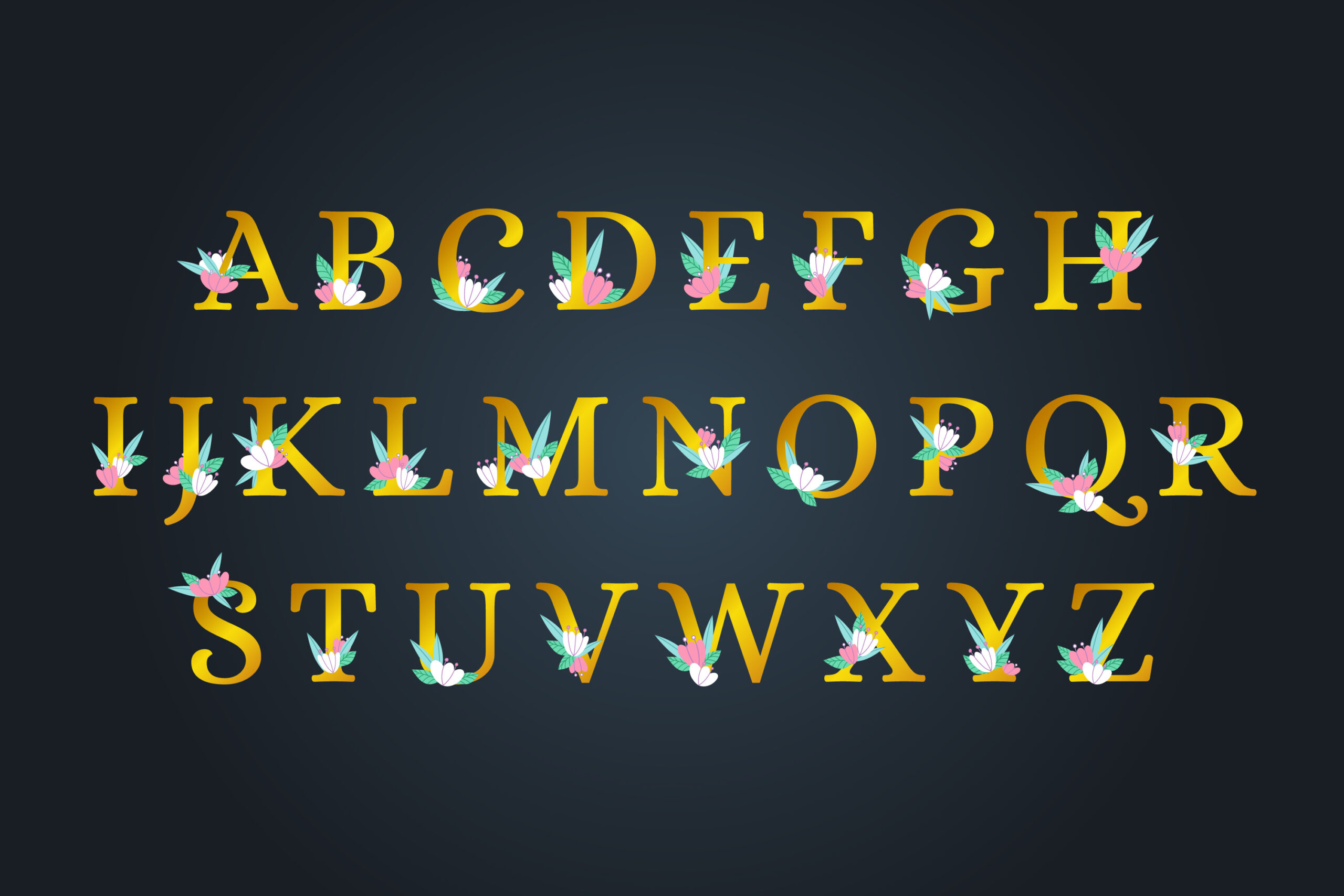Fonts, or Schriftarten in German, play a pivotal role in the world of design. The typeface you choose can communicate emotion, establish brand identity, and greatly affect how content is perceived by your audience. The term “Schriftarten ABC” refers to the broad array of fonts, from A to Z, available to designers, writers, and brands alike. Understanding the nuances of different fonts is crucial for crafting messages that resonate with your target audience.
In this article, we’ll explore the world of Schriftarten (fonts), diving deep into their history, types, usage, and how they influence the modern design landscape. Whether you’re a designer, marketer, or someone curious about the world of typography, this guide will equip you with the knowledge to choose the right fonts for your next project.
1. What Are Fonts (Schriftarten)?
Fonts, or Schriftarten, are a collection of characters including letters, numbers, and symbols that share a consistent design. Each typeface is designed to convey a particular style, mood, or tone. There are countless fonts available today, from traditional styles like Times New Roman to modern, experimental fonts that break the mold.
The Role of Fonts in Communication
Fonts serve as more than just a tool to present words; they are a form of visual communication. The font you use affects how your message is interpreted. For example, a bold, sans-serif font might convey strength and modernity, while a delicate, cursive script could evoke feelings of elegance and tradition.
2. The History of Schriftarten
The history of fonts dates back centuries to the early days of printing presses. Johannes Gutenberg’s invention of the movable type in the 15th century paved the way for the creation of different fonts. Early fonts were often based on handwriting styles, leading to the development of serif fonts.
Over time, as technology advanced, so did typography. By the 20th century, designers were experimenting with a wider variety of styles, including sans-serif fonts which offered a cleaner, more modern look. Today, digital fonts allow for an even greater range of creativity, making it possible to create and distribute Schriftarten in a matter of minutes.
3. Types of Fonts (Schriftarten)
There are several primary categories of fonts that every designer should be familiar with:
a. Serif Fonts
Serif fonts are characterized by the small lines or “feet” attached to the ends of letters. They are considered more traditional and formal. Common examples include Times New Roman, Georgia, and Garamond.
When to Use Serif Fonts:
Serif fonts are often used in printed works, such as books, newspapers, and formal documents, because they are easy to read in long blocks of text. They evoke a sense of reliability and professionalism.
b. Sans-Serif Fonts
Sans-serif fonts lack the small decorative lines seen in serif fonts, giving them a more modern, clean appearance. Popular sans-serif fonts include Arial, Helvetica, and Calibri.
When to Use Sans-Serif Fonts:
These fonts are excellent for digital media, websites, and presentations. Their simple design makes them easy to read on screens, and they convey a modern, minimalist feel.
c. Script Fonts
Script fonts imitate handwriting and often have a decorative, elegant style. They can range from formal calligraphy styles to casual, playful scripts. Examples include Brush Script and Lobster.
When to Use Script Fonts:
Script fonts are best for invitations, logos, and branding materials that require a personal touch. However, they should be used sparingly, as they can be difficult to read in large blocks of text.
d. Display Fonts
Display fonts are designed to grab attention and are often used for headlines or titles. They can be bold, unique, and creative, making them unsuitable for long passages of text. Examples include Impact, Bebas Neue, and Comic Sans.
When to Use Display Fonts:
Use display fonts for branding, posters, or any situation where you need to make a visual statement. They are eye-catching and can set the tone for your entire design.
4. How to Choose the Right Schriftarten
Choosing the right font is an essential part of design. The font should not only be legible but also reflect the personality of the brand or project. Here are a few tips for selecting the perfect Schriftarten:
- Purpose: Consider the purpose of your text. Is it for a formal document, a creative project, or digital media?
- Audience: Who is your target audience? Fonts that appeal to a younger demographic may not be suitable for a more professional or corporate setting.
- Readability: Ensure that your chosen font is easy to read, especially in long paragraphs. Avoid overly decorative fonts for body text.
- Tone: Think about the tone of your message. Serif fonts convey tradition and authority, while sans-serif fonts communicate simplicity and modernity.
5. The Impact of Schriftarten on Branding
Fonts are one of the most crucial elements in branding. A company’s logo, website, and marketing materials all rely on typography to create a cohesive brand image. Fonts help to establish brand recognition, and the wrong choice can confuse or alienate customers.
For example, brands like Coca-Cola use a signature script font that conveys nostalgia and tradition, while tech companies like Google use sans-serif fonts to reflect their innovative, forward-thinking identity.
Consistency is Key:
When choosing Schriftarten for branding, it’s essential to maintain consistency across all platforms. This helps in building a strong brand identity and ensuring that your audience can immediately recognize your brand by its typography. Schriftarten ABC.
6. Popular Schriftarten for Different Uses
Some fonts have become popular because of their versatility and widespread use. Here are a few Schriftarten that are commonly used across different platforms:
- Arial: A widely used sans-serif font that’s versatile and easy to read.
- Times New Roman: A classic serif font, often used in academic and formal settings.
- Roboto: A modern sans-serif font often used for digital platforms, especially by tech companies.
- Lobster: A playful script font popular for logos and branding.
- Garamond: A serif font known for its elegance, often used in books and literature.
7. Best Practices for Combining Schriftarten
Pairing fonts can be tricky, but it’s a vital skill for any designer. When combining Schriftarten, balance is key. Schriftarten ABC Here are some tips to ensure your font combinations are successful:
- Contrast: Choose fonts that contrast well with each other. Pairing a serif with a sans-serif font is a common practice that creates balance.
- Limit the Number of Fonts: Stick to two or three fonts in a single project to avoid a cluttered design.
- Hierarchy: Use fonts of varying sizes and weights to create a clear visual hierarchy, guiding the reader’s eye through the text.
8. The Future of Schriftarten
As design trends evolve, so does the world of Schriftarten. With advancements in technology, designers now have access to variable fonts, which allow for more flexibility in weight and style. In addition, there is a growing trend toward custom fonts that reflect a brand’s unique personality.
The Rise of Digital Typography:
With more content being consumed online, digital-first fonts that optimize readability on screens are becoming increasingly important. Google Fonts and Adobe Fonts offer a wide selection of digital fonts that adapt to different screen sizes and devices.
See Also Read: Schriftarten ABC.
Conclusion
The world of Schriftarten is vast and ever-evolving. From traditional serif fonts to modern sans-serifs and creative display fonts, each typeface has its own unique role in design. Understanding how to choose and use fonts effectively can make a significant difference in how your message is received.
Whether you’re working on branding, creating a website, or designing printed materials, the right Schriftarten can elevate your design and help you connect with your audience on a deeper level. Keep experimenting, stay updated with trends, and most importantly, choose fonts that align with the message you want to convey. Schriftarten ABC.


